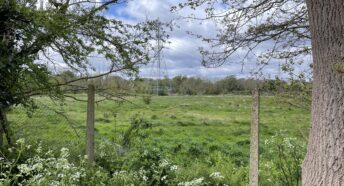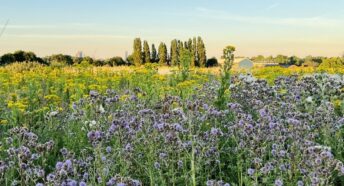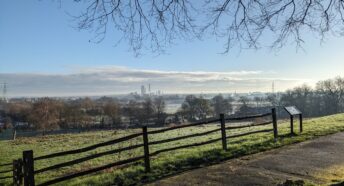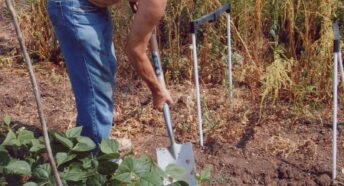May 2022 Green Belt report launched
Green Belt: the countryside next door to 30m people needs investment to level up access to nature, says CPRE
As CPRE launches its latest Green Belt research The Countryside Nextdoor, we asked for comment from local campaigners in Enfield and Hounslow where large swathes of London’s Green Belt are under threat from boroughs wishing to release land for development. Alice Roberts of CPRE London said: “We are working alongside local groups in these boroughs to show there is no need to build on Green Belt: development needs can be met on brownfield land. For example, in Enfield, sites like the A10 retail park are a huge waste of space with acres of surface car park. Building on Green Belt is as lose-lose scenario for residents in both Hounslow and Enfield: they stand to lose the countryside next door for homes which will be far from affordable and will do nothing to solve London’s housing crisis. And London stands to lose land which is vital in the fight against climate and nature crises. The Green Belt is our ‘climate safety belt‘.”
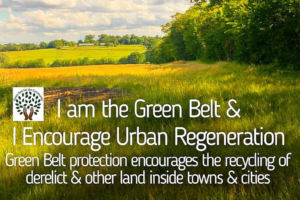
Carol Fisk of Enfield RoadWatch said: “Green Belt campaigners in Enfield are very pleased to see this renewed focus on the value of the Green Belt and its importance to millions of urban residents. Nearly 40% of Enfield is Green Belt and much of it is under threat from development in the current Local Plan revision process. While some tree-planting has been done, there has been no comprehensive plan for the borough’s countryside so it has become very vulnerable. Agri-Environmental Scheme [AES] funding would allow a broader strategy to be developed to improve soil health, boost biodiversity and restore historic parks, landscapes, buildings and other assets within the Green Belt. The benefits to people, wildlife and the environment would be enormous. The Green Belt is too precious to lose.”
Marie Rabouhans, speaking on behalf of the several groups opposing Green Belt release in Hounslow, said: “Hounslow Council’s main arguments for removing land from the Green Belt are that the need for land for industry/housing constitute ‘exceptional circumstances’ and/or that the land in question is of poor quality. Those opposing this aspect of the Local plan Review for the West of Borough refute those arguments. The need for land for development is an issue for all London boroughs. If a borough, having fully explored all options, genuinely cannot meet housing/industry targets without use of Green Belt land, the targets should be adjusted. Green Belt must be accepted as a justified constraint on development not an opportunity for it. If areas of Green Belt are of poor quality, they need to be improved not lost to development. Loss of this land as Green Belt would compromise the Council’s ability to meet its objectives relating to health and well-being, climate change mitigation and adaptation.
“Sir Frank Fraser Darling concluded his 1969 Reith lectures on Wilderness and Plenty by saying ‘Most people will never know true wilderness, although its existence will not be a matter of indifference to them. The near landscape is valuable and lovable because of its nearness, not something to be disregarded and shrugged off: it is where children are reared and what they take away in their minds to their long future. What ground could be more hallowed?’ This eloquently expresses how we feel about our Green Belt in Hounslow.”
National Media Release
Green Belt: the countryside next door to 30m people needs investment to level up access to nature, says CPRE
- First analysis of the geographical spread of agri-environment schemes shows spending on the Green Belt lagging behind rest of the countryside
- Green Belt covers 12.5% of England but is the countryside next door for 30 million people – with a dense network of public footpaths, bridleways, cycle tracks, nature reserves and historic parks and gardens
- Underinvestment is damaging health and wellbeing – a relatively small increase in spending would have an outsized impact on more than half the population
The Green Belt is missing out on government funding for the restoration of nature and cultural heritage despite it being the countryside next door to 30 million people – or more than half of England’s population. Valued spaces such as the parkland setting of Bentley Priory – the headquarters of the RAF during the Battle of Britain – are at risk of neglect or loss. The government is being urged to meet its commitments to both protect and enhance Green Belt land or risk losing it to development forever.
So called ‘agri-environment’ schemes to plant trees, improve soil health, boost biodiversity and restore historic parks and buildings are not sufficiently benefiting the countryside that is most accessible to the general public. The findings come as repeated studies show the countryside around our most populous towns and cities is increasingly valued by the public. Analysis by CPRE, the countryside charity, of a recent government study shows that four out of the ten most valued parks in England are on Green Belt land. Land managers interviewed by CPRE confirmed the surge in the number of people visiting historic sites and beauty spots first reported during lockdown has continued to remain strong, with the Green Belt increasingly being used for walking and recreation.
Just over a quarter (28%) of Green Belt agricultural land is covered by agri-environment schemes, compared to 42% nationwide. Only 7% of all national spending is on Green Belt land, even though Green Belts contain 11% of all England’s farmland. A new report by CPRE recommends boosting funding for the countryside next door to our towns and cities. In addition to improving access to nature, the schemes should aim for broader public benefits such as strategically planting trees and hedgerows to prevent urban flooding.
The countryside next door: why we need to invest in greener, healthier Green Belts is the first research to analyse the geographical spread of where agri-environment funding has been spent. The government is initiating a new regime of Environmental Land Management (ELM) schemes to replace previous agricultural and land management subsidies. The report demonstrates that the new schemes are the most important means by which the government’s own pledge to safeguard and improve the Green Belt can be met.
Crispin Truman, chief executive of CPRE, the countryside charity, said:
‘The government needs to invest in the Green Belt on a major scale if ministers are to meet their political commitments to protecting and enhancing the countryside next door for 30 million people. The alternative to funding the Green Belt increases the risk of it being built on it instead. History repeatedly shows that when protected countryside is under-appreciated it’s at risk of being lost forever to development.
‘People deserve countryside on their doorstep where agriculture is less intensive, where there is space for nature that everyone can explore and enjoy and which is accessible to all. Green Belts have a crucial role in enhancing the sustainability of our cities. Green Belt land can provide essential ecological functions and recreational benefits which are fundamental to health and wellbeing. And this can go hand in hand with sustainable agricultural production and climate change mitigation.’
The Green Belt includes over 6,000 miles of public rights of way, 34% of all England’s nature reserves and 22% of its historic parks and gardens. The report shows that many social groups face particular challenges accessing these places, such as crossing busy roads, stiles, and a lack of reliable public transport. Against a background of cuts to local government budgets for supporting parks and green spaces, funding from existing agri-environment schemes has played an essential role in maintaining historic parks around our towns and cities, and making them more accessible.
That’s why CPRE is calling for a significant increase in investment in the Green Belt through ELMs, in order to improve the countryside environment closest to where the majority of people live. The government committed in the Levelling Up Bill to ‘improved Green Belts around towns and cities’ and to ‘develop plans for further greening of the Green Belt in England’. In order to address deprivation and ensure as many people as possible benefit, there should also be new investment to improve the countryside around large cities that don’t have a protected Green Belt, such as Leicester, Norwich, south Hampshire and Teesside.
Ben Goldsmith, vice chair of London Rewilding and a Defra board member, said:
‘Few people grasp the degree to which the natural fabric of Britain has become depleted. Sights, sounds and smells which were common to previous generations are unknown to much of ours. A lack of access to green spaces exacerbates the disconnect from nature now experienced by great swathes of our society. Britain’s green belt areas offer a tremendously exciting opportunity to reinvigorate nature right on the doorstep of tens of millions of people, reconnecting rural and urban nature and bringing wildlife into our most densely populated centres. This report from CPRE, which articulates how we might go about rewilding our green belts, is spot on and hugely exciting.’
Current funding to support access to the countryside should be improved by ELM to explicitly help socially and economically deprived communities, including people of colour and people with physical disabilities. There should also be an effort to make existing rights of way more accessible.
Paula Brunt, vice-chair, secretary and rambles organiser at the Disabled Ramblers, said:
‘One of Disabled Ramblers aims is to open up the countryside for all. This is so beneficial to the disabled. The benefits of being out in nature are both physical and mental – it’s proven to lower blood pressure and aid sleep, as well as the physical benefits. Whatever your ability, being out enjoying life with nature all around you just makes you feel good.
‘Apart from the obvious barriers of stiles and locked gates, one way to improve accessibility is by attitude. People don’t always understand that we, in our wheelchairs or scooters, have the same rights as someone walking. We often hear of members being told to get off a footpath as it’s just for walkers. If there was more funding through government subsidies to improve accessibility through schemes like ELMs, this would be a great start and would also incentivise landowners to do more, as it was beneficial to them too.’
ENDS
For further information or to interview a spokesperson, please contact:
Sam Relph, CPRE Media Relations Lead, at samr@cpre.org.uk or 020 7981 2827 / 07739 332796
About CPRE, the countryside charity
CPRE is the countryside charity that campaigns to promote, enhance and protect the countryside for everyone’s benefit, wherever they live. With a local CPRE in every county, we work with communities, businesses and government to find positive and lasting ways to help the countryside thrive – today and for generations to come. Founded in 1926. President: Emma Bridgewater. Patron: Her Majesty The Queen. www.cpre.org.uk
About The countryside next door: why we need to invest in greener, healthier Green Belts
The aim of this research is to investigate the benefits of increased public investment in urban fringe or ‘countryside next door’ areas, specifically in terms of safeguarding and enhancing the historic environment around large or other important towns and cities.
Download the report here.
CPRE would like to thank the following organisations for their contributions towards this work:
• Disabled Ramblers
• The Gardens Trust
• Historic England
• Natural England
• Ramblers
The case study research element was carried out by Sarah Rutherford Historic Environment Ltd (SRHEL).




